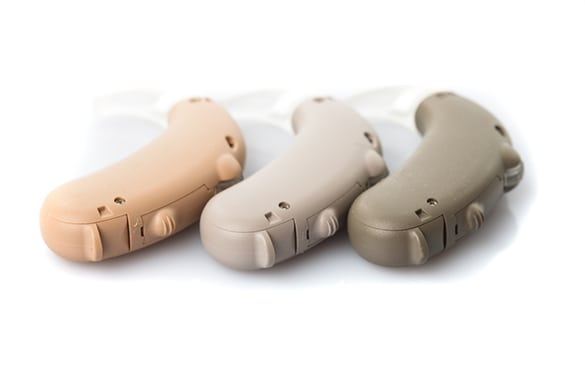
Aging and exposure to loud noises are two of the most common factors contributing to hearing loss.
Nearly 40 million Americans, or about 12 percent of the population, have what’s classified as severe hearing loss. Everyone’s experience with hearing-related difficulties is different.
- While anyone may experience hearing issues, it’s more common in older adults. Two to three out of every thousand children in the United States are born with some level of hearing loss.
- The recommended treatment for 90-95 percent of patients with significant hearing loss is the use of a hearing aid.
Causes of Hearing Loss
Hearing occurs when sounds waves enter ears from the outer ear, vibrate off of the eardrum in the middle ear, and travel as nerve signals to the brain via tiny hairs after going to the inner ear (cochlea). Loud noises or natural changes due to aging can cause the tiny hairs that transmit sound information to the brain to become damaged or reduce in number.
Some people experience hearing loss as a result of illnesses like meningitis that can damage structures in the ear. Certain medications may also affect the ability to hear. Additionally, hearing in one or both ears could be affected by:
- Objects being purposely or unintentionally inserted into the ear
- Ear infections
- Progressive buildup of earwax
- A ruptured eardrum (tympanic membrane perforation)
- Sudden air or ear pressure changes
- Environmental noise exposure related to fireworks, construction work, loud concerts, or explosions


Signs and Symptoms
When hearing loss is gradual or age-related (presbycusis), it’s possible not to notice it until family members and friends complain about habits such as turning the volume up on the TV to hear it. You may also notice that sounds seemed muffled. When people are speaking, sentences sometimes sound if they are fading. It’s also common to have difficulty hearing certain pitches or trouble comprehending background noises. If hearing loss is sudden, you’ll likely notice an instant reduction in the ability to hear, or you may not be able to detect sound out of the affected ear at all.
Diagnosing Hearing Loss
Following an initial physical exam to look for causes of hearing loss such as inflammation or earwax buildup, several tests are done to assess overall hearing capabilities. Initial testing sometimes involves covering up one ear and then the other to get a general idea of your degree of hearing loss or a tuning fork test. Audiometer tests are more comprehensive evaluations done with earphones and a series of tones, usually in a special booth or testing area.
Treatment Options
Treatment may involve nothing more than removing earwax or doing a thorough ear cleaning. If damage is related to the inner ear, hearing aids are often recommended. Surgical options include the insertion of drainage tubes if an infection is the source of the problem and cochlear implants, which compensate for the damaged part(s) of the affected ear. Surgery may also be done to correct structural damage due to an injury or disease.
According to the National Institute on Deafness and Other Communication Disorders (NIDCD), just one out of five people who would likely benefit from a hearing aid actually wear one. Improvements with technology have significantly reduced the size of these devices, making some models virtually undetectable when worn. Even if hearing loss ends up being a temporary problem not requiring a hearing aid or surgery, it’s important to see a doctor or hearing specialist as soon as a sudden or progressive reduction in hearing ability is noticed.


